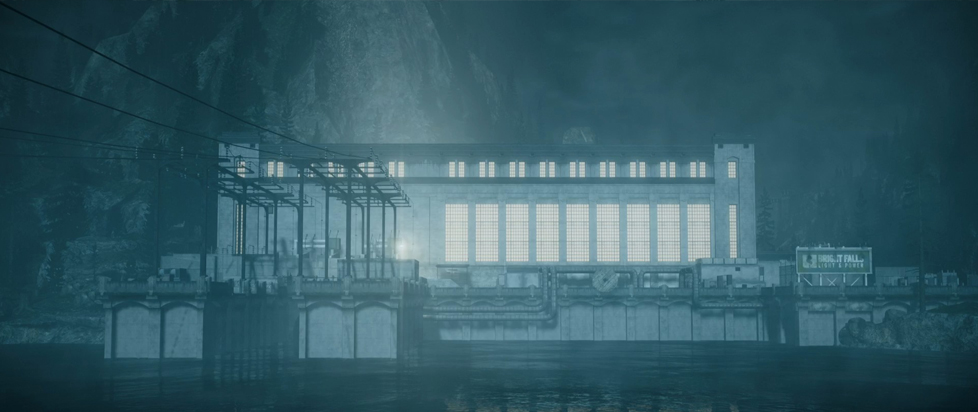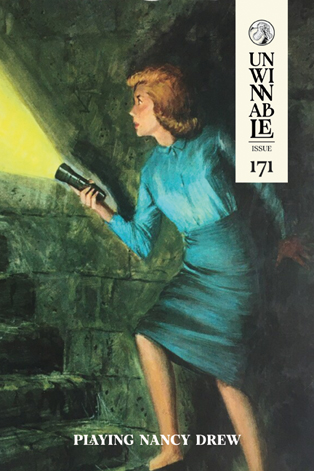
Pacific Palettes

This column is a reprint from Unwinnable Monthly #171. If you like what you see, grab the magazine for less than ten dollars, or subscribe and get all future magazines for half price.
———
Architecture and games.
———
The notoriously foreboding Pacific Northwest is filled with lush landscapes, towering evergreen forests and a vibrant cultural tapestry, a combination which is largely responsible for producing a rather captivating array of architectural styles. From the historic charm of Victorian homes to the sleek lines of Modernist architecture, the buildings of the Pacific Northwest reflect the dynamic interplay between nature and culture. I’d like to briefly explore this relatively underappreciated region, taking a look at the various types of architecture which have shaped the identity of this part of the planet, most notably given the recent release of Alan Wake 2, a game which takes place in the fictional town of Bright Falls, Washington. You can see some of the influences right in the level design.
The streets of cities and towns throughout the Pacific Northwest have been permanently marked by the timeless elegance of the Victorian and Craftsman styles. These architectural movements were all about the intricate detailing, especially in the woodwork. With gabled roofs, ornate trimmings and vibrant colors, Victorian homes exude a strong sense of romanticism, echoing the aspirations of this ambitious period. Craftsman homes on the other hand emphasize functionality and simplicity, aiming for a harmonious integration with nature. Typical of the style are exposed beams, overhanging eaves and ornamental fittings. Spanning the late nineteenth and early twentieth centuries, both of these architectural movements contribute to the local charm and historic depth of the region. Seattle and Portland in particular have some beautifully preserved examples.
The later twentieth century experienced a wave of stylistic innovation driven by Modernism, thought leaders like Frank Lloyd Wright and Richard Neutra inspiring architects around the world to embrace clean lines, open spaces and a seamless integration between indoor and outdoor living. As can be seen in the sleek structures of steel, glass and plastic, Modernist homes in the Pacific Northwest frequently feature large windows framing the natural features of the surrounding landscape. The minimalism of this architectural movement stands in opposition to the ornate styles of previous generations, appealing to the spirit of a region that was by this point in time no longer a distant frontier.

Northwest Regionalism emerged around the middle of the twentieth century. The movement was aimed at capturing the unique environmental conditions of the Pacific Northwest, architects including Pietro Belluschi and John Yeon attempting to create an architectural identity in seamless integration with the coastal climate. The style emphasizes the use of local materials like cedar and stone, often incorporating bay windows to maximize natural light, something which is almost always at a premium in the region. The various designs focused on blending into the landscape, resulting in buildings that appear almost organically rooted into their surroundings. Northwest Regionalism remains associated with an ongoing commitment to sustainability and environmentalism, both of which are becoming deeply ingrained into the culture of the Pacific Northwest. In recent years, architects in the region have been focusing on sustainable building and operational practices. As this part of the world grapples with environmental concerns and a growing population, the aim has been to find innovative design features that address the challenges posed by climate change. Green roofs, energy efficient materials and passive design strategies will soon be the norm as opposed to the exception, as development projects go forward.
While the makeup of urban centers throughout the Pacific Northwest continue to evolve, the skylines of cities like Portland, Seattle and Vancouver have become increasingly dotted with residential towers and office buildings, reflecting a vertical shift in contemporary architecture. The challenge of limited space has inspired architects to think creatively, resulting in innovative designs following the recently defined best practices in terms of sustainable features. Adaptive reuse has become a trend as well, industrial buildings being repurposed into apartments, retail spaces or studios. This approach not only preserves the character of the past but also contributes to the cultural development of these growing cities, notably Seattle. This commitment to architectural preservation will hopefully continue, repurposing rather than removing such historical structures.
The architectural landscape of the Pacific Northwest is a tapestry woven from the various threads of local history, culture and the profound connection to the natural environment which remains characteristic of the region as a place. From the timeless elegance of Victorian homes to the sustainable designs of the contemporary era, each architectural style contributes to the ever-changing identity. As the Pacific Northwest continues to evolve, architects will undoubtedly draw inspiration from the past while finding ways to break new ground, reflecting the dynamic spirit of this captivating corner of the world. Games along the lines of Alan Wake 2 provide a glimpse into this peculiar place, allowing you to experience the multifaceted architectural identity of a region largely untouched by modern media.
———
Justin Reeve is an archaeologist specializing in architecture, urbanism and spatial theory, but he can frequently be found writing about videogames, too. You can follow him on Twitter @JustinAndyReeve.




